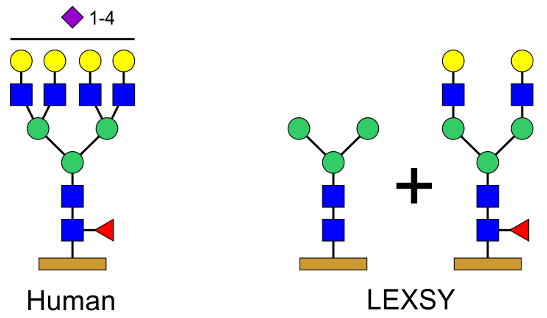Glycosylation can be found in 50 % of all mammalian proteins and is particularly important for their proper structure and function. However, the organism mainly used for protein production, E. coli, is not able to provide the correct glycosylation patterns.
LEXSY, based on the eukaryotic organism L. tarentolae, is able to recognize mammalian glycosylation sites and provides recombinantly expressed proteins with correct and homogenous N- and O-glycosylation patterns (Figure 1)[1–5], while retaining the ease of handling users are accustomed to from E. coli.



Need further information? Please check out the LEXSY section or contact Andreas by email at expression@jenabioscience.com!
[1] Breitling et al. (2002) Non-pathogenic trypanosomatid protozoa as a platform for protein research and production. Protein Expr Purif 25:209.
[2] Klatt et al. (2013) Production of glycosylated soluble amyloid precursor protein alpha (sAPPalpha) in Leishmania tarentolae. J Proteome Res 12:396.
[3] Czarnota et al. (2023) Effect of Glycan Shift on Antibodies against Hepatitis C Virus E2 412-425 Epitope Elicited by Chimeric sHBsAg-Based Virus-Like Particles. Microbiol Spectr 11(2): e02546-22.
[4] Czarnota et al. (2020) Specific antibodies induced by immunization with hepatitis B virus-like particles carrying hepatitis C virus envelope glycoprotein 2 epitopes show differential neutralization efficiency. Vaccines (Basel) 8:1.
[5] Guo et al. (2018) Activation and activity of glycosylated KLKs 3, 4 and 11. Biol Chem 399:1009.